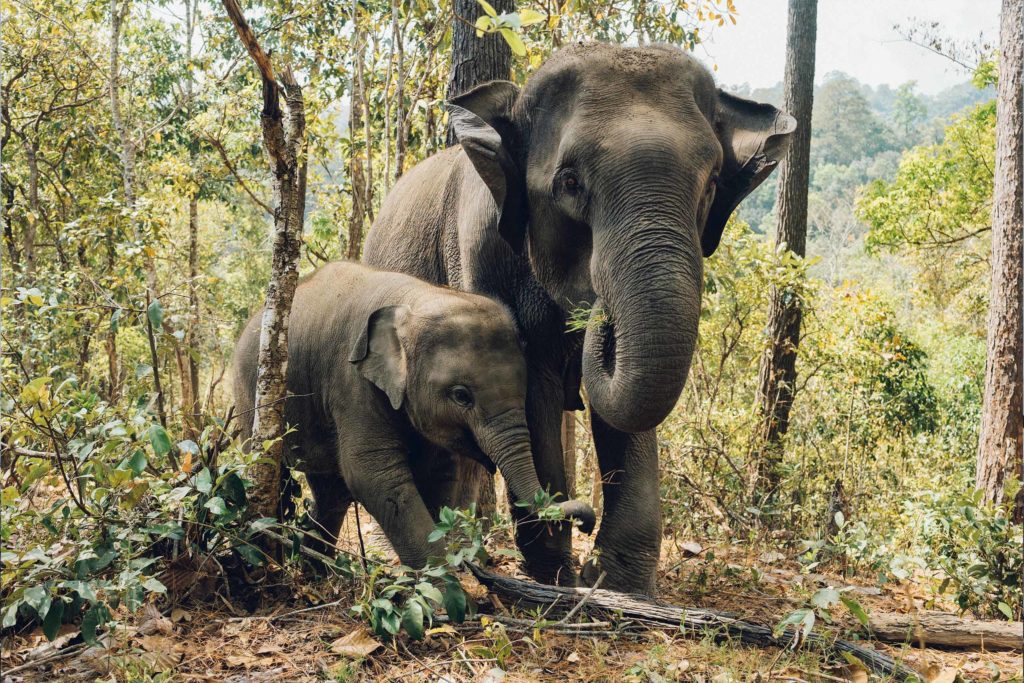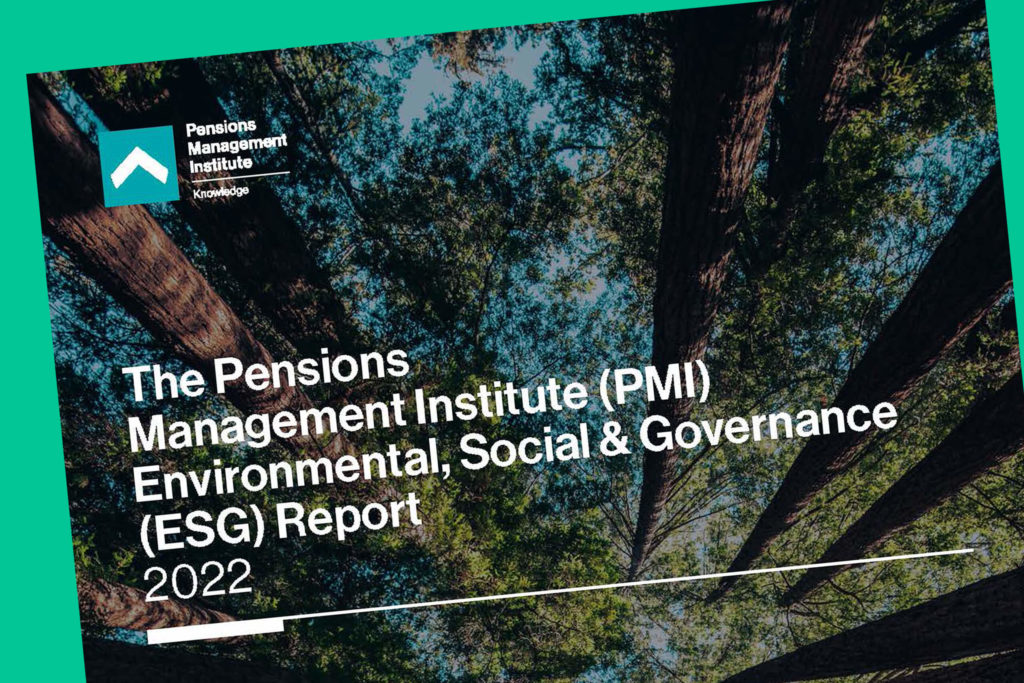How do you value an elephant?
Sustainability is dominating Trustees’ agenda with climate change squarely at the top. But the other side of the climate change coin is biodiversity loss, a topic that deserves Trustees’ attention in its own right, with many experts considering it a threat more serious than climate change.
A cartoon circulating on NGO websites depicts waves of crises in orders of magnitude. First, COVID-19, then recession, then climate change, and last, the biggest risk of them all, biodiversity loss. The World Economic Forum seems to agree. Biodiversity loss is rising in its annual ranking of global risks, currently coming in third.
But what is biodiversity and how is it relevant to pension funds?
Inevitably, we must start with definitions and consider three terms often used interchangeably: Biodiversity, nature and natural capital. Nature is the term most familiar to us and can be defined as the natural world. Biodiversity is the variability of living things. In other words, we can think of nature as land and biodiversity as the richness of that land.
In 2016, I joined a group of investors visiting palm oil plantations in Indonesia. Palm oil is an edible vegetable oil. WWF estimates that more than half of all packaged goods Americans consume contain palm oil – it’s in lipsticks, soaps, detergents and even ice cream.
Palm oil is a major cause of deforestation, and can be found in our investment portfolios, along with other commodities that cause deforestation such as beef, soy and timber.
From Jakarta, we flew to Pekanbaru, the economic capital of Sumatra Island – Indonesia’s largest. From Pekanbaru we drove about 150 kms south east. The roads were slow, a mix of tarmac and dirt, and it took just over 4 hours. The clock on the dashboard of the Landcruiser clicked by but the scenery was essentially unchanged. Row after row after row of palm trees standing in regiment like a military parade. There was little in between the palm trees, just sandy strips of dirt, perhaps a fern, perhaps some grass. Each palm was planted with precision, not a metre of space to be wasted.
The lack of biodiversity was by design. Animals could disrupt palm oil yields.
Palm oil is an issue on four fronts. First, the rainforest, which acts as a carbon sink, is bulldozed. Second, any remaining forestry is burnt. The ground is high carbon peatland releasing toxic clouds of greenhouse gases into the atmosphere. The fires can continue under ground for months. Third, palm trees are planted creating a monoculture, degrading soil.
Fourth, there is a social dimension too. At one of the plantations, the workers wore brand new goggles, yellow vests, sturdy trousers and shoes. But I didn’t need to look too far to see barefoot children with a talent for climbing trees. Modern slavery, including child and forced labour, is common.
This is not an issue unique to Indonesia. Many a tropical country is deforesting apace. Indeed, take a train across the British or French countryside and its field after field of wheat, barley, sunflower or grape. Deforestation sounds like a huge problem, and deforestation may well be in our investment portfolios, but doesn’t it require a policy response? How is deforestation in Indonesia relevant to a pension fund in the UK? We think there’s a few reasons:
- Company-specific financial risk. If companies in our portfolio rely on natural capital, nature and biodiversity loss is a threat to companies’ profitability. An interesting example is pollination. Supply chains of companies in which we invest may rely on a variety of pollinators to ensure that each plant is pollinated at the right time. There are examples where farmers are having to “install” beehives because there is no longer sufficient natural pollination.
- Systemic financial risk. Disruption to supply chains could affect multiple parts of our portfolio at the same time in the same direction, for example, a food crisis. An example have global impact, particularly in low income communities. Another example is the steep rise in coffee price due to drought in Brazil. The drought is directly related to deforestation impacting local weather patterns.
- Reputational risk. NGOs are increasingly engaging companies – and investors – on deforestation. In turn, consumer pressure and changing consumption habits can impact a company’s reputation.
- Engagement opportunity. Deforestation is rising on the agenda of shareholder AGMs.
- Policy risk. Efforts to stop deforestation involve a complex web of domestic policy, import policies, international diplomacy and corporate regulation.
Pension schemes can hold their asset managers and advisors to account asking: What are the at-risk sectors and at-risk companies in our portfolios? Which metrics, or combination of metrics, are used to identify risks? What are the upcoming shareholder resolutions on deforestation?
What other steps can we take?
The first is to incorporate PBAF, the Partnership for Biodiversity Accounting Financials, in investment decision-making. PBAF provides guidance on how to understand, assess and take action to mitigate biodiversity-related risks.
The second is TNFD, the nature equivalent to TCFD. TNFD is working to standardise and organise nature-related disclosures across the financial intermediation chain. This year and next, TNFD will propose methodologies to measure nature-related financial risks and support nature positive investment and publish guidance on target-setting.
The frameworks are helpful, because measuring nature and biodiversity loss is complex. A ton of greenhouse gas, whether emitted in the UK or Indonesia, has the same atmospheric effect. But an acre of land in the UK will have very different environmental characteristics to Indonesia. On its own, an aggregated portfolio-level metric is not particularly useful, as it depends on sector and geography.
Groups like Finance for Biodiversity Pledge seek to raise awareness, undertake research and pool expertise.
We’re also seeing innovative engagements. ACTIAM, a Cardano company, is partnering with Satelligence, which uses satellite data to detect and quantify changes in vegetation cover in at risk countries, allowing for real-time corporate engagement. ACTIAM has also pioneered bioacoustics – literally microphones. The more biodiverse, the more noise. And ACTIAM has set land and water-use targets across its investment strategies.
At COP 26, the UN climate conference that took place in Glasgow in November 2021, biodiversity was a major part of the agenda. A speaker from the government of Gabon asked the audience “how do you value an elephant?”
Gabon remains the last stronghold of African forest elephants, having taken steps to protect its rainforest. But Gabon is an outlier: “If we assume a carbon price of $100 a ton”, the speaker said, “in the Democratic Republic of the Congo, around $25 billion of value is destroyed every year through deforestation. And that’s just one tropical country of many.”
At the COP 26 meetings, governments pledged just under $20 billion globally and the timeline is unclear. It’s not nothing, but it’s just not enough. In other words, for all the recent attention to climate change, globally we’re continuing to deforest apace, we don’t have the financing measures in place to address deforestation, and as such, biodiversity loss continues and will get worse. A biodiversity COP, COP 15 in Montreal, will meet later in 2022, and is expected to set new global targets. As pension schemes, this is a financial risk we must address – but we also have agency. There is an investment and engagement rationale for taking action to address biodiversity loss – but we can also approach biodiversity loss first principles. Taking action is the right thing to do.
As an industry, we are becoming clearer on the actions investors can take. Adding biodiversity loss to the next pension scheme trustee meeting is an important first step.




